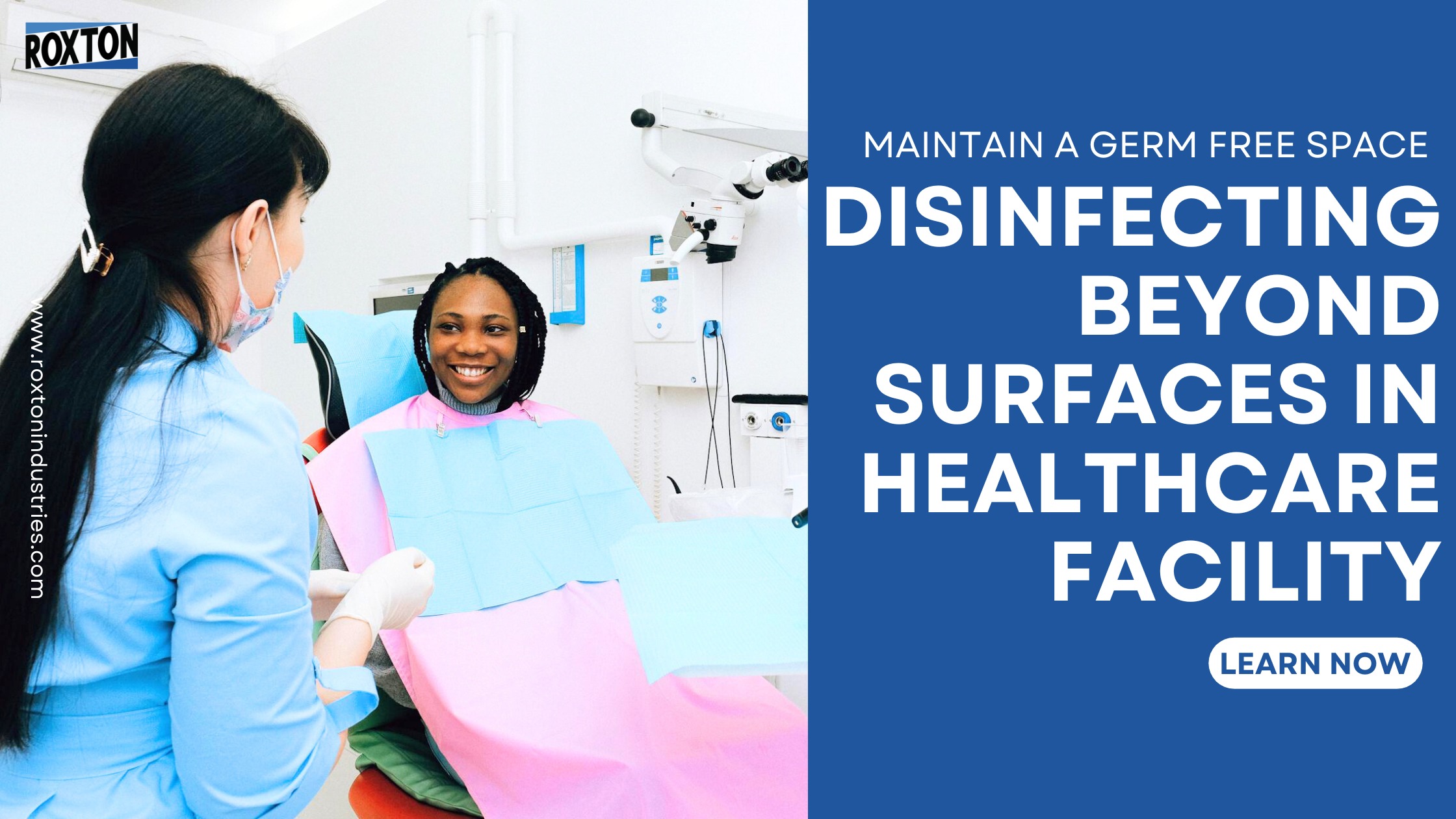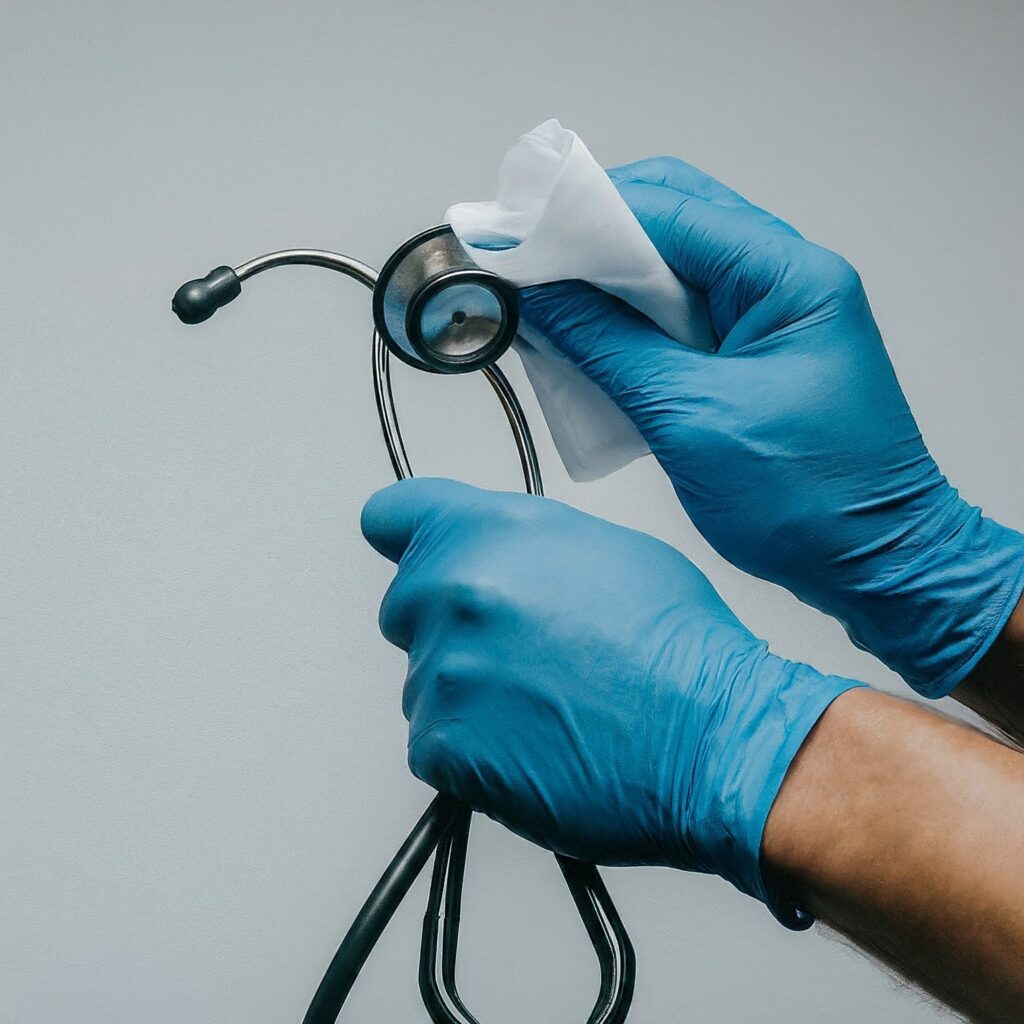Disinfecting Beyond Surfaces in Healthcare Facility: Maintaining a Germ-Free Facility

Keeping Patients Safe: The Power of Infection Prevention in Reducing HAIs
In healthcare facilities, ensuring patient safety is paramount. Hospital-acquired infections (HAIs), infections contracted during a hospital stay, are a significant concern. According to the CDC, HAIs affect an estimated 1.7 million patients in the US annually, contributing to additional healthcare costs and prolonged hospital stays. Fortunately, robust infection prevention practices play a vital role in minimizing the risk of HAIs. While disinfection of surfaces is a cornerstone of infection control, a comprehensive approach that extends beyond just surfaces is essential.
Disinfection Beyond Surfaces: Protecting Patients with Medical Equipment Hygiene
The Hidden Threat: Germs on Medical Equipment
Medical equipment, often overlooked in disinfection routines, can harbor harmful pathogens. Stethoscopes, thermometers, and surgical instruments, frequently coming into contact with patients, can become breeding grounds for bacteria, viruses, and even fungi. Contaminated equipment poses a significant risk of cross-contamination, potentially transmitting infections from one patient to another.
Ensuring Optimal Patient Care: Effective Disinfection Practices
Disinfecting wipes impregnated with solutions approved for healthcare settings offer a convenient and effective way to disinfect medical equipment. Look for wipes registered with the EPA and labeled for use against specific pathogens common in healthcare environments. Here’s a step-by-step guide for effective disinfection using wipes:
- Clean: Before disinfection, remove any visible soil or debris from the equipment with a disposable cloth.
- Disinfect: Following the manufacturer’s instructions, thoroughly wipe down all surfaces of the equipment with a disinfectant wipe, ensuring proper saturation for the required contact time.
- Dispose: Discard the used wipe in a designated biohazard waste container.
Addressing Challenges: Considerations for Different Equipment Types
Disinfecting certain equipment might require additional considerations. For example, delicate electronics may require wipes with specific alcohol concentrations to avoid damage. Flexible tubing on certain equipment may necessitate wipes with specific textures for thorough disinfection. Consult the manufacturer’s recommendations for specific equipment and choose wipes or alternative disinfection methods accordingly.
Our Pick
High-Touch Surfaces: The Silent Spreaders of Germs in Healthcare
The Silent Spreaders: Identifying High-Touch Surfaces in Healthcare Environments
Throughout healthcare settings, numerous surfaces are constantly touched by patients, staff, and visitors. These “high-touch surfaces” – door handles, light switches, bed rails, call buttons – become prime real estate for germ transmission. Regular disinfection of these surfaces is crucial to interrupt the chain of infection and prevent the spread of pathogens.
Breaking the Chain of Infection: Frequent Disinfection is Key
Frequent disinfection of high-touch surfaces throughout the day is essential. Disinfecting wipes offer a quick and convenient solution for staff to routinely disinfect these areas. They are portable, readily available, and require minimal preparation, making them ideal for on-the-go disinfection. While spray bottles and microfiber cloths can also be effective, wipes often provide a more streamlined disinfection approach.
“According to a 2020 study in American Journal of Infection Control, the frequent disinfection of high-touch surfaces with alcohol-based disinfectants can reduce the risk of HAIs by up to 40%.”
Optimizing Efficiency: Make Disinfection Easy with Dispensers
Strategically placed disinfectant dispensers throughout patient care areas encourage frequent disinfection by staff. This ensures easy access to wipes, promoting consistent compliance with disinfection protocols. Consider incorporating electronic dispensing systems for high-traffic areas to further enhance efficiency and track usage.
Conclusion: A Multi-Pronged Approach for Optimal Infection Prevention
A comprehensive disinfection strategy that encompasses both medical equipment and high-touch surfaces is vital for creating a truly germ-free zone in healthcare settings. Remember, disinfection works hand-in-hand with proper hand hygiene to create a robust infection prevention program.
Explore our EPA-registered and Health Canada approved disinfecting wipes designed for healthcare. See how our wipes can create a safer, more hygienic environment for your patients and staff.
Additional Resources:
- Centers for Disease Control and Prevention (CDC): https://www.cdc.gov/infection-control/hcp/index.html
- World Health Organization (WHO): https://www.who.int/teams/integrated-health-services/infection-prevention-control
By implementing these practices and utilizing effective disinfection solutions, healthcare facilities can significantly reduce the risk of HAIs, contributing to a safer environment for patients and staff alike.
About admin
Latest Posts

The Impact of Cleanliness on Employee Health and Productivity
In today’s fast-paced work environment, employers are placing increasing value on wellness initiatives that go beyond just gym memberships or...
The Essential Guide to Dispensers For Wipes, Soaps, Sanitizers: The Must-Have Dispenser for Gyms, Schools & Healthcare
In today’s world, cleanliness and hygiene have become more critical than ever before. Whether it's a gym, school, healthcare facility,...



